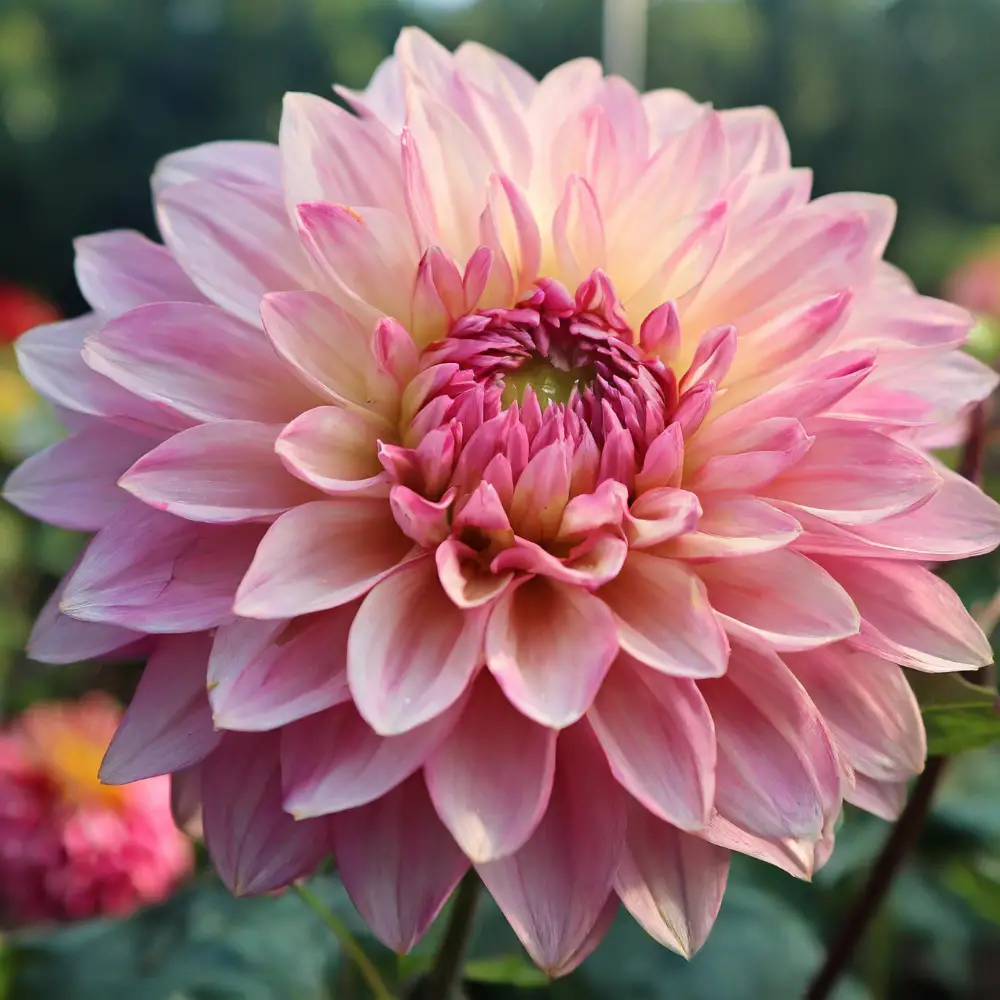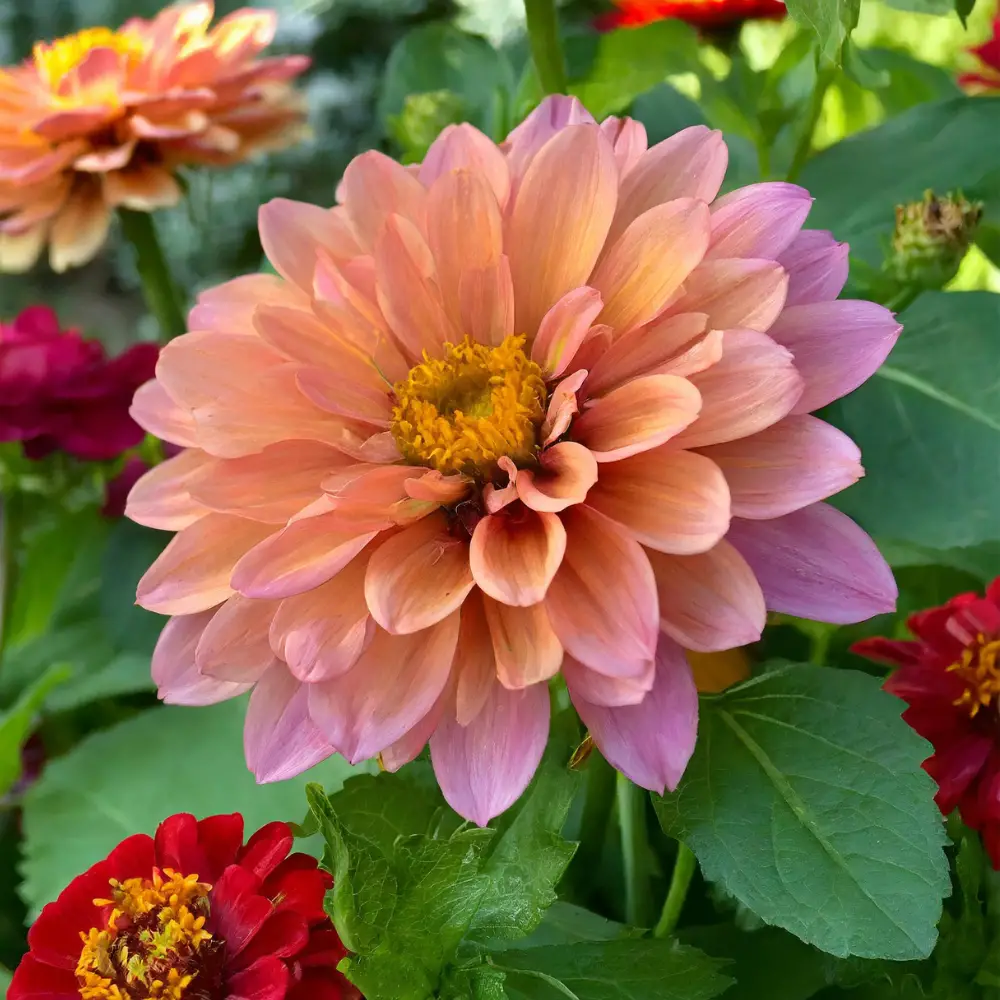The Diverse World Of Dahlias: Explore these Cultivars for spring

This post follows our research editorial guidelines.

Dahlias are akin to the divas of the gardening world, embodying showiness, diversity, and sheer beauty. These flowers range from petite, charming varieties to dinner plate-sized spectacles, infusing gardens and bouquets with vibrant colors.
Delving into the enchanting world of dahlias, let’s explore nine distinct types, each capable of transforming any garden into a vivid tapestry of hues and forms. Let’s take a look at some of the most astounding blooms you can find in the garden center this year, you won’t want to miss these!

Quickly Find The Dahlia Your Looking For:
1. Anemone Dahlias

Anemone Dahlias boast a distinctive flower structure, with a central cluster of tubular petals surrounded by an outer layer of flat petals, creating an eye-catching contrast.
They prefer sunny spots and well-draining soil, requiring regular watering and deadheading to flourish from mid-summer to fall. The term “anemone” derives from the Greek word for “wind,” hinting at the delicate, wind-swept appearance of these blooms, adding a unique texture and depth to the garden palette.
2. Single Dahlias

Single Dahlias encapsulate elegance with their simple, yet sophisticated, design. Each flower showcases a single layer of petals encircling a central disc, reminiscent of a daisy, and comes in an array of colors from vivid to soft pastels.
They thrive in well-drained, fertile soil, basking in full sunlight for at least six hours a day. This accessibility in growing conditions makes them a favored choice. Notably, Single Dahlias serve as a beacon for pollinators; their open center provides easy access for bees and butterflies, positioning them as excellent contributors to eco-friendly gardens.
3. Collarette Dahlias

Collarette Dahlias are known for their whimsical charm, featuring a ‘collar’ of small petals that encircle the central disc. This collar contrasts beautifully against the backdrop of larger outer petals. Thriving in sunny conditions with moist, well-drained soil, a layer of mulch helps in retaining soil moisture and temperature. These dahlias are popular in cutting gardens; their distinctive form and long stems make them ideal for creating eye-catching bouquets and floral arrangements.
4. Waterlily Dahlias

Waterlily Dahlias draw their name from their resemblance to the serene waterlily, with petals that gently curve towards the stem, forming an elegant bowl shape. They demand a sunny location and fertile, well-drained soil for optimal growth, often requiring support to prevent stem breakage. The tranquil beauty of Waterlily Dahlias adds a calming presence to any garden, echoing the peace of a still pond.
5. Peony Dahlias

Peony Dahlias, with their large, fluffy blooms, mimic the appearance of peonies. They feature multiple layers of petals surrounding a delightful open center, thriving in sunny spots with well-drained soil. Regular deadheading encourages a longer blooming period. Despite their delicate looks, Peony Dahlias are surprisingly resilient and can tolerate wetter conditions better than many other varieties.
6. Cactus Dahlias

Cactus Dahlias stand out with their dramatic, spiky, tubular petals, contributing texture and a vibrant splash of color to the garden. They require full sun and well-draining soil, with careful attention to avoid overwatering. The name “cactus” reflects the petals’ resemblance to cactus spines, though they are entirely soft to the touch, adding a unique visual interest without the prickliness.
7. Decorative Dahlias

Decorative Dahlias are among the most beloved for their lush, sizable blooms that come in an array of shapes and colors. Their petals can range from flat to twisted or curled, enriching the garden’s texture. Versatile in nature, they thrive in full sun and rich, well-draining soil. The diversity within the Decorative Dahlia category makes them a favorite for gardeners who delight in showcasing their blooms, whether in gardens or competitions.
8. Pompon Dahlias

Pompon Dahlias charm with their small, spherical blooms composed of tightly arranged petals, resembling colorful balls atop slender stems. They share the dahlia family’s preference for sunshine and well-drained soil, with regular deadheading encouraging an abundance of blooms. The precise form of Pompon Dahlias is a testament to nature’s ability to craft geometric beauty, offering a unique aesthetic appeal.
9. Dinner Plate Dahlias

Dinner Plate Dahlias are the showstoppers, boasting massive blooms that can reach up to 12 inches across in a variety of colors and forms. They need ample sun, rich soil, and space to accommodate their grandeur, often requiring stakes for support due to the weight of their blooms. The impressive size of Dinner Plate Dahlias isn’t just for show; their blooms can be so heavy that individual support systems are sometimes necessary to keep the stems from breaking.
Final Thoughts
The world of dahlias is rich and varied, presenting an option for every gardener’s taste and style. From the elegant Single Dahlias to the magnificent Dinner Plate Dahlias, these blooms are sure to add spectacular color and interest to any garden. With the right care and conditions, the beauty of dahlias can be enjoyed from summer through fall, making any garden a haven for both humans and local wildlife.
I hope you enjoyed this list, if you have any favorite cultivars I missed, let me know the comment below!
